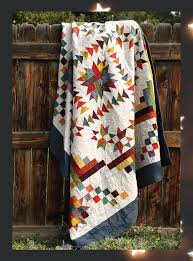Savor the Flavors of Hawaii at Merriman’s Honolulu

Exploring Merriman’s Honolulu: A Culinary Delight
Nestled in the heart of Honolulu, Merriman’s is a culinary gem that offers a unique dining experience for locals and visitors alike. With its commitment to using fresh, locally sourced ingredients and innovative culinary techniques, Merriman’s has established itself as a must-visit destination for food enthusiasts.
Founded by renowned chef Peter Merriman, Merriman’s Honolulu showcases the best of Hawaii’s diverse flavors and culinary traditions. The menu features a tantalizing array of dishes that highlight the bounty of the islands, from fresh seafood to organic produce.
Whether you’re craving traditional Hawaiian fare or looking to explore inventive fusion dishes, Merriman’s has something to satisfy every palate. The restaurant’s elegant yet inviting ambiance makes it the perfect setting for a romantic dinner, a celebratory meal, or simply a night out with friends.
At Merriman’s, dining is not just about enjoying delicious food; it’s also about celebrating the rich culinary heritage of Hawaii and supporting local farmers and producers. By prioritizing sustainability and community engagement, Merriman’s exemplifies the spirit of aloha in every dish served.
So if you find yourself in Honolulu and are looking for an unforgettable dining experience that captures the essence of Hawaii’s vibrant food scene, be sure to make a reservation at Merriman’s. Prepare to embark on a culinary journey that will delight your taste buds and leave you craving more.
Experience the Essence of Hawaii: Merriman’s Honolulu Offers Fresh, Local Flavors and Sustainable Dining
- Fresh, locally sourced ingredients
- Innovative culinary techniques
- Diverse menu showcasing Hawaii’s flavors
- Elegant yet inviting ambiance
- Perfect for romantic dinners or special occasions
- Supports local farmers and producers
- Embraces sustainability in its practices
- Captures the essence of Hawaii’s vibrant food scene
Consider These 5 Drawbacks Before Dining at Merriman’s Honolulu
- High prices compared to other dining options in Honolulu
- Limited menu options for vegetarians and vegans
- Reservations may be required well in advance due to popularity
- Parking can be challenging in the area surrounding the restaurant
- Service quality may vary depending on staff availability and workload
Fresh, locally sourced ingredients
Merriman’s Honolulu takes pride in sourcing fresh, locally grown ingredients to create their culinary masterpieces. By utilizing produce and seafood from local farmers and fishermen, Merriman’s ensures that each dish is not only of the highest quality but also supports the sustainability of Hawaii’s agricultural community. The commitment to using locally sourced ingredients not only enhances the flavors of their dishes but also showcases the rich diversity and abundance of Hawaii’s food resources.
Innovative culinary techniques
Merriman’s Honolulu stands out for its innovative culinary techniques, setting it apart as a pioneer in the vibrant food scene of Hawaii. By combining traditional Hawaiian flavors with modern cooking methods, Merriman’s creates dishes that are not only delicious but also artistically crafted. The restaurant’s commitment to pushing the boundaries of culinary creativity results in a dining experience that is both exciting and memorable, appealing to those seeking a fresh perspective on Hawaiian cuisine.
Diverse menu showcasing Hawaii’s flavors
Merriman’s Honolulu shines with its diverse menu that beautifully showcases the vibrant flavors of Hawaii. From fresh seafood caught off the shores of the islands to organic produce sourced from local farms, every dish at Merriman’s is a culinary celebration of Hawaii’s rich and diverse food culture. Whether you’re in the mood for traditional Hawaiian favorites or innovative fusion creations, Merriman’s offers a tantalizing array of options that cater to every palate. Each bite transports diners on a flavorful journey through the unique tastes and ingredients that define Hawaii’s culinary landscape.
Elegant yet inviting ambiance
Merriman’s Honolulu offers an elegant yet inviting ambiance that sets the stage for a memorable dining experience. The sophisticated decor and warm atmosphere create a welcoming space where guests can relax and savor their meal in style. Whether you’re celebrating a special occasion or simply enjoying a night out, the combination of refined elegance and friendly hospitality at Merriman’s ensures that every visit is a true delight for all the senses.
Perfect for romantic dinners or special occasions
Merriman’s Honolulu is the ideal setting for romantic dinners or special occasions, offering a sophisticated and intimate atmosphere that sets the stage for memorable moments. With its elegant decor, impeccable service, and exquisite menu featuring locally sourced ingredients, Merriman’s creates a magical ambiance that is perfect for celebrating love, milestones, or simply indulging in a special evening with a loved one. Whether you’re looking to impress a date or commemorate a significant event, Merriman’s provides the perfect backdrop for creating cherished memories that will last a lifetime.
Supports local farmers and producers
Merriman’s Honolulu stands out for its commitment to supporting local farmers and producers. By sourcing fresh ingredients from nearby farms and suppliers, the restaurant not only ensures the highest quality of food but also contributes to the sustainability of Hawaii’s agricultural community. This dedication to showcasing local flavors not only enhances the dining experience for patrons but also helps to strengthen the connection between food, culture, and community in a meaningful way.
Embraces sustainability in its practices
Merriman’s Honolulu sets itself apart by embracing sustainability in its practices. From sourcing locally grown ingredients to implementing eco-friendly initiatives, the restaurant is committed to reducing its environmental impact and supporting the community. By prioritizing sustainable practices, Merriman’s not only ensures the freshness and quality of its dishes but also contributes to the preservation of Hawaii’s natural resources for future generations to enjoy.
Captures the essence of Hawaii’s vibrant food scene
Merriman’s Honolulu excels in capturing the essence of Hawaii’s vibrant food scene by showcasing a diverse array of dishes that highlight the rich culinary heritage of the islands. From fresh seafood caught locally to organic produce sourced from Hawaiian farms, every bite at Merriman’s is a celebration of the flavors and traditions that make Hawaii’s food culture so unique. The restaurant’s commitment to using fresh, locally sourced ingredients not only enhances the quality and taste of its dishes but also supports the local community and promotes sustainability. Dining at Merriman’s is not just a meal; it’s an immersive experience that allows guests to savor the true flavors of Hawaii in every bite.
High prices compared to other dining options in Honolulu
Merriman’s Honolulu, while offering a top-tier dining experience, is often criticized for its high prices compared to other dining options in Honolulu. Some diners may find the cost prohibitive, especially when considering the wide range of more affordable dining choices available in the area. While the quality and freshness of ingredients at Merriman’s justify the higher prices for many patrons, budget-conscious individuals may need to weigh their options carefully before deciding to dine at this upscale establishment.
Limited menu options for vegetarians and vegans
One drawback of dining at Merriman’s Honolulu is the limited menu options available for vegetarians and vegans. While the restaurant prides itself on using fresh, locally sourced ingredients to create innovative dishes, those following a plant-based diet may find their choices somewhat restricted. Despite the culinary creativity showcased in their menu, vegetarians and vegans may wish for a more diverse selection of meat-free options to fully enjoy their dining experience at Merriman’s.
Reservations may be required well in advance due to popularity
Due to its popularity and reputation for exceptional dining experiences, Merriman’s Honolulu often requires reservations to be made well in advance. Securing a reservation ahead of time is highly recommended to ensure that you can enjoy the culinary delights and ambiance that Merriman’s has to offer without any delays or disappointments. Planning ahead allows guests to guarantee their spot at this sought-after dining destination and ensures a seamless and enjoyable dining experience.
Parking can be challenging in the area surrounding the restaurant
One notable challenge when visiting Merriman’s Honolulu is the limited parking availability in the surrounding area. With the restaurant’s prime location in the heart of Honolulu, finding a convenient parking spot can be a bit of a struggle for diners. However, despite this inconvenience, many patrons find that the exceptional dining experience at Merriman’s is well worth the effort of navigating the parking situation. Planning ahead and considering alternative transportation options can help mitigate this con and ensure that your visit to Merriman’s is as enjoyable as possible.
Service quality may vary depending on staff availability and workload
At Merriman’s Honolulu, one potential drawback to be aware of is that the quality of service may vary depending on staff availability and workload. While the restaurant strives to provide excellent customer service, fluctuations in staffing levels and busyness can impact the overall dining experience. Guests may encounter delays or inconsistencies in service during peak hours or when the restaurant is short-staffed. It is advisable to manage expectations accordingly and be understanding of any challenges that arise due to staffing constraints.

